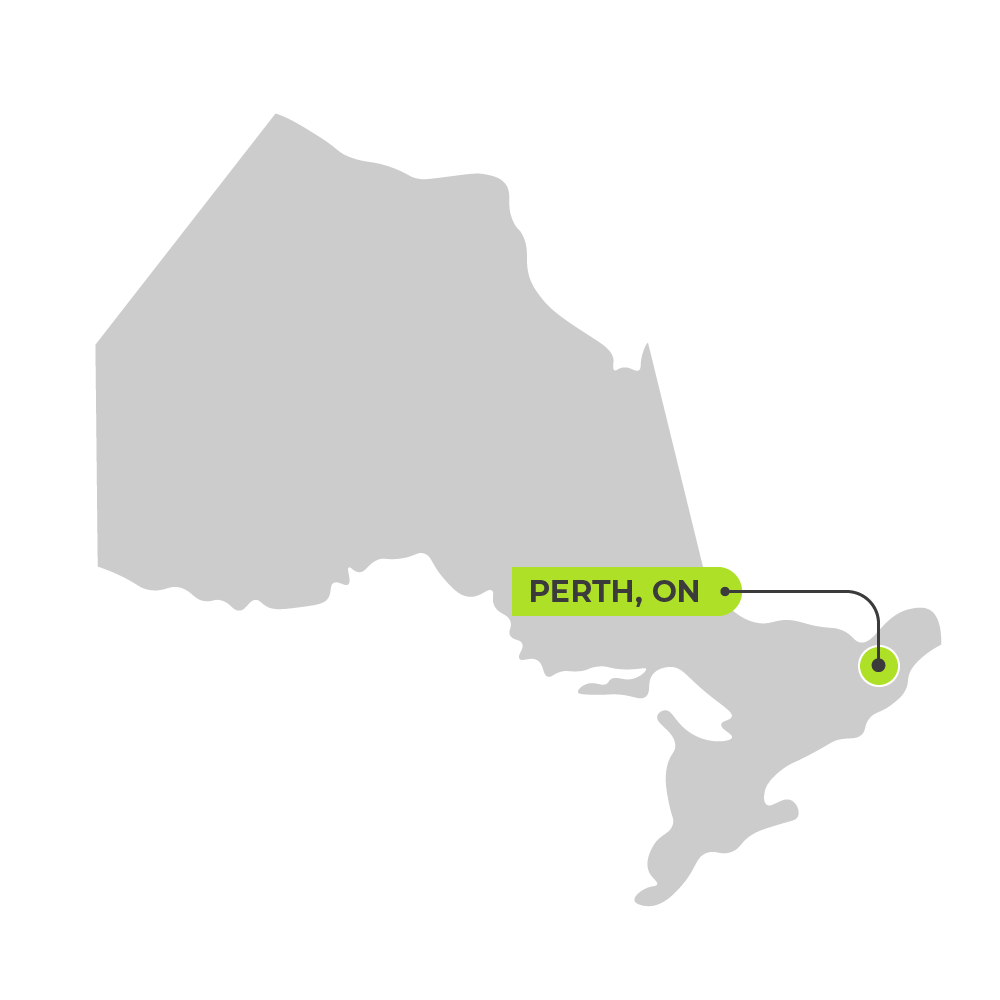
Using an innovative addition to its wastewater treatment system, the Town of Perth, ON, was able to affordably increase the quality of water discharged by its treatment system into the Tay River and extend the system’s life by another 30 years.
Results
8 mg/L
of total suspended solids reduced

15 mg/L
of total ammonia reduced

90%
in operating costs avoided compared to a mechanical wastewater treatment plant
The Town of Perth completed a new addition to its wastewater treatment system in 2018.
An eastern Ontario town of close to 6,000 people, it had met its wastewater treatment needs for almost 50 years with a three-cell sewage lagoon. But by the early 2000s, the system was operating near capacity. There were also concerns about ammonia in the effluent. The town needed to reduce its impact on the Tay River and prepare for a potential doubling of its population in the coming decades.
Provincial regulators recommended a mechanized wastewater treatment facility. At the time, the town was spending $125,000 a year to operate its lagoon system. A mechanized treatment plant could cost 10 times that amount to operate and $30–40 million to build. In the early 2010s, the town began looking for innovative solutions that could be implemented at a fraction of the cost of building a new plant.


Low costs and simplicity of operation are key for effective wastewater treatment in small communities. A wastewater treatment engineering firm in Winnipeg had developed a system they called a Submerged Attached Growth Reactor (SAGR) in 2007. The system is cheap to build, operate and maintain compared to the alternatives, and the water it produces meets or exceeds regulatory requirements.
The SAGR system is designed to be added onto a lagoon system such as Perth’s. It provides a third stage of treatment, removing ammonia and suspended solids, and reducing the time water needs to sit in the lagoon. The system can remove ammonia even when cold water slows down the growth of bacteria needed for the treatment process.
The town conducted a field test in 2012. The test demonstrated that the new addition could increase the flow of water through the lagoon and enhance the existing treatment system.
After the successful field test, the town installed the SAGR system in 2018, integrating it into the existing lagoon site and using local materials. The surrounding wetlands were not disturbed during construction. With provision for adding another cell if required, the system will meet the needs of Perth’s residents for decades to come.
The Perth SAGR demonstrates a simple, sustainable method of treating sewage. This system can be replicated by other small towns with existing lagoons that need an alternative to more costly, conventional wastewater treatment plants.
The recent lab results for the system are great—equalled only by a mechanized treatment plant. For a small town with limited capital and operating budgets, the SAGR system is affordable and makes a lot of sense."
—Grant Machan, Director of Environmental Services, Town of Perth
Want to explore all GMF-funded projects? Check out the Projects Database for a complete overview of funded projects and get inspired by municipalities of all sizes, across Canada.

